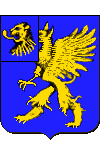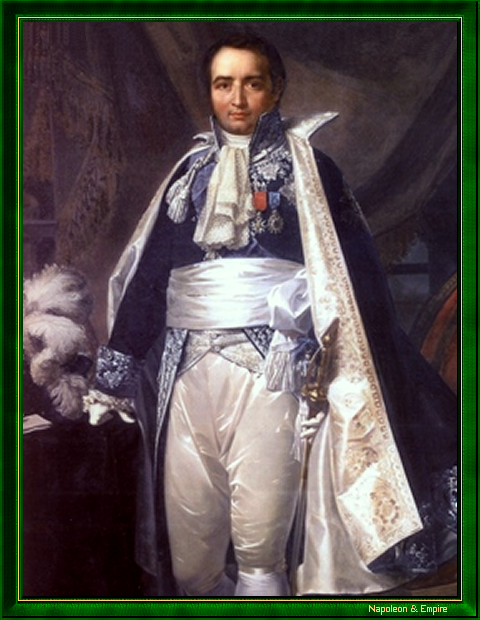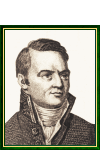Jean-Pierre Bachasson
Count of Montalivet
Pronunciation:

Jean-Pierre Bachasson was born into a noble family in Neunkirch, near Sarreguemines, on July 5, 1766. The son of a marshal de camp, he followed in his father's footsteps, enlisting at the age of thirteen in the Nassau hussar regiment. But he soon left the army, perhaps under pressure from his family, to study law, which made him a member of the Grenoble parliament at the age of nineteen.
His appointment was withdrawn in 1790 when the Constituante abolished the parliaments. He withdrew to Valence, where since 1785 he had maintained occasional relations with Bonaparte who, as a young lieutenant in the 4th artillery regiment garrisoned in the town, had access to the salon of Madame Bachasson.
During the Terror, to ensure his personal safety, Bachasson enlisted in a volunteer battalion. But he soon returned to civilian life, in 1795, as mayor of Valence.
Bonaparte, who had become First Consul, remembered him and appointed him Prefect of Manche in 1801, and of Seine-et-Oise in 1805. He also made him a member of the Conseil d'État in 1804, before entrusting him with the Direction Générale des Ponts et Chaussées in 1806.
His activity, zeal and the Emperor's benevolence earned him the title of Count in 1808 and Minister of the Interior in 1809.
In this position, he justified the trust placed in him by devoting himself to the country's economic development, promoting industry and public works. In particular, he improved the port of Ostend, built numerous roads across the Alps, and built countless monuments in Paris (quays, fountains, triumphal arches...).
A docile and devoted servant - almost to the point of slavery, according to his detractors - in the last days of the Empire, he spoke out in favor of all-out war.
In 1814, against his advice, the government and Empress Marie-Louise left Paris for Blois. He followed them, seeking through his feverish proclamations to shake the inertia of the masses. In vain.
After leading a secluded life during the first Restoration, he joined Napoleon during the Hundred Days, only to perform the largely honorary duties of Intendant Général de la Couronne.
The second Restoration returned him to private life. In 1819, King Louis XVIII made him Peer de France at the suggestion of Elie Decazes.
He died in Pouilly-sur-Loire on January 22, 1823, and is buried in the Saint-Bouize cemetery in the Cher department.
"Jean-Pierre Bachasson, Count of Montalivet" by Jean-Baptiste Régnault (Paris 1754 - Paris 1829).

His wife, née Adélaïde de Saint-Germain, was a particular favorite of Napoleon's (he had courted her when he was stationed in Valence, and had asked for her hand in marriage to M. de Saint-Germain, who had refused, believing the young artillery lieutenant to have no future), and had the honor of being asked to serve empress Joséphine as lady of the palace.
Address
2, Rue Saint-Louis en l'Île. Paris IVème arrondissement
It was in 1809 that Jean-Pierre Ba chasson de Montalivet, the new Minister of the Interior, bought the Hôtel Lambert, wonderfully located at the tip of the Ile Saint-Louis.Other portraits

"Jean-Pierre Bachasson, Count of Montalivet". 19th century engraving.

"Jean-Pierre Bachasson, Count of Montalivet". 19th century French school.